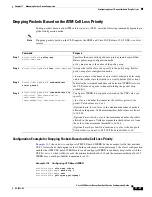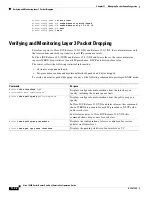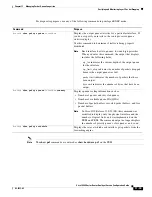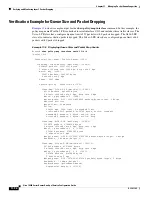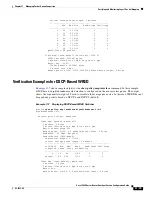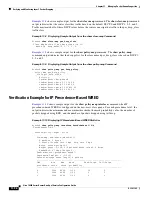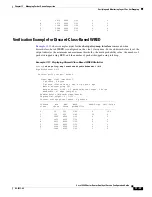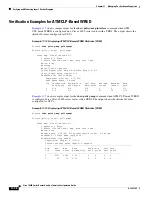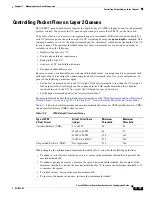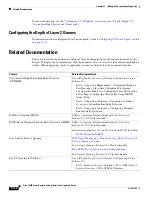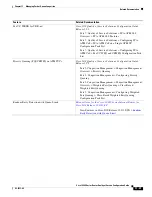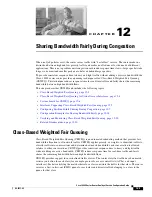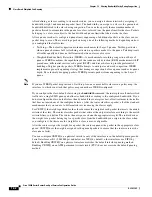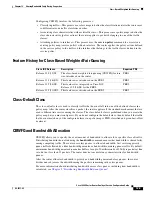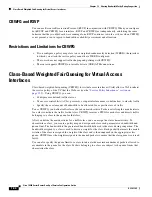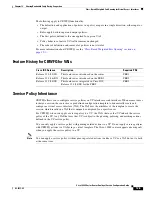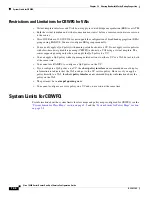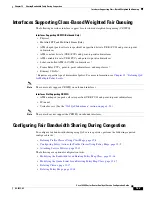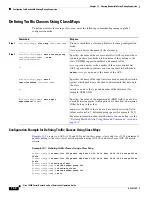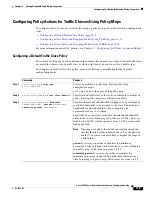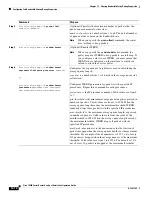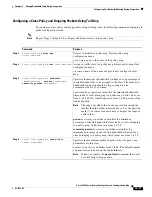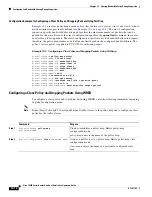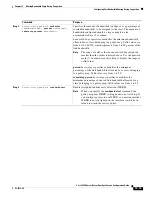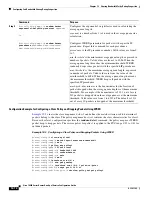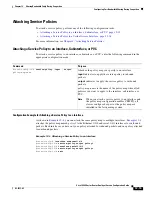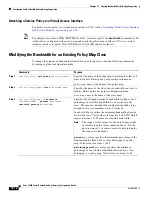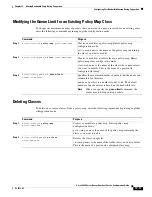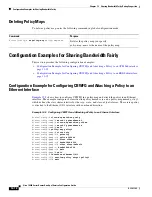
12-3
Cisco 10000 Series Router Quality of Service Configuration Guide
OL-7433-09
Chapter 12 Sharing Bandwidth Fairly During Congestion
Class-Based Weighted Fair Queuing
Configuring CBWFQ involves the following processes:
•
Classifying traffic—This process uses class maps to define the classification criteria the router uses
to differentiate one traffic class from another.
•
Associating class characteristics with each traffic class—This process uses policy maps to define the
class characteristics (policy actions) the router applies to packets belonging to one of the traffic
classes.
•
Attaching policies to interfaces—This process uses the
service-policy
command to associate an
existing policy map (service policy) with an interface. The router applies the policy actions defined
in the service policy to the traffic on the interface that belongs to the traffic classes defined in the
service policy.
Feature History for Class-Based Weighted Fair Queuing
Class-Default Class
The
class-default
class is used to classify traffic that does not fall into one of the defined classes in a
policy map. After the router classifies a packet, the router applies all the standard mechanisms that are
used to differentiate service among the classes. The class-default class is predefined when you create the
policy map, but you must configure it. If you do not configure the default class, then by default the traffic
that does not match any of the configured classes in a policy map is FIFO-classified and given best-effort
treatment.
CBWFQ and Bandwidth Allocation
CBWFQ allows you to specify the exact amount of bandwidth to allocate for a specific class of traffic.
Distributing bandwidth on a link using the
bandwidth
command ensures that bandwidth is shared fairly
among competing traffic. The router uses class queues to allocate bandwidth, first servicing priority
queue traffic followed by either bandwidth guarantee or bandwidth remaining queue traffic. By default,
a minimum bandwidth guaranteed queue has buffers for up to 50 milliseconds of 256-byte packets at line
rate, but not less than 32 packets. The router does not ensure latency characteristics for bandwidth
queues.
After the router allocates bandwidth to priority and bandwidth guaranteed class queues, the router
divides unused (excess) bandwidth among the packets remaining in the class queues.
For more information about distributing bandwidth across class queues, including how bandwidth is
calculated, see
Chapter 5, “Distributing Bandwidth Between Queues.”
Cisco IOS Release
Description
Required PRE
Release 12.0(19)SL
The class-based weighted fair queuing (CBWFQ) feature
was introduced on the router.
PRE1
Release 12.2(16)BX
This feature was introduced on the PRE2.
PRE2
Release 12.2(28)SB
This feature was integrated in Cisco IOS
Release 12.2(28)SB for the PRE2.
PRE2
Release 12.2(31)SB2
This feature was introduced on the PRE3.
PRE3

